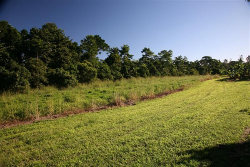|
|
Treat coarse sedimentCoarse and medium sized sediments can be lost from agricultural production systems via surface water run-off. Sediments can increase turbidity, alter habitat and smother plants and animals including corals, wetlands and marine environments. Treatment systems to remove sediment from run-off use physical processes to settle out coarse and medium sized sediments (generally larger than 125μm, i.e. sand[3]). These treatment systems need to be designed to slow the water velocity sufficiently to trap the target sediment type. Fine sediments such as silts, clays and colloidal material (less than 125μm[3]) need to be removed through different processes, such as enhanced sedimentation, adsorption and filtration[4]. See fine sediments, nutrients and other toxicants for more information. Quick facts
Treatment systems for agriculture – Treat coarse sedimentSelect from the tabs below Which treatment systems can I use?The soil type within the catchment will influence the type and size of sediment requiring removal and the treatment system will need to be designed and sized accordingly (Table 1). A coarse sand (1000μm) has a settling velocity of 0.1 metres per second (m/s) whereas a very fine sand (125μm) has a settling velocity of 0.011m/s[1]. Therefore, to remove a very fine sand requires slower water velocities and a longer detention time which typically requires a larger structure. Usually a simple, open, pond-like structure (e.g. sediment basin) is adequate to reduce the velocity sufficiently to enable coarse and medium sediments to settle out, provided it is sized appropriately for the site conditions when considering catchment area, soil types, local rainfall and hydrology. Dense vegetation, such as grasses and reeds, can also act to slow water velocity and physically trap coarse sediments and other pollutants, such as leaf litter and rubbish (plastics etc.).
*NB: Assuming a sediment basin is part of the wetland design Table 1 on the main treatment system page provides more details on main treatment processes, type of flow treated and land uses treatment systems have been primarily used in. Additional informationMinnesota Pollution Control Agency—Processes for removing pollutants from stormwater runoff Melbourne Water—Constructed wetlands Wetland Technical Design Guidelines References
Last updated: 10 June 2022 This page should be cited as: Department of Environment, Science and Innovation, Queensland (2022) Treatment systems for agriculture – Treat coarse sediment, WetlandInfo website, accessed 8 May 2025. Available at: https://wetlandinfo.des.qld.gov.au/wetlands/management/treatment-systems/for-agriculture/treat-sed.html |

 — Department of the Environment, Tourism, Science and Innovation
— Department of the Environment, Tourism, Science and Innovation


